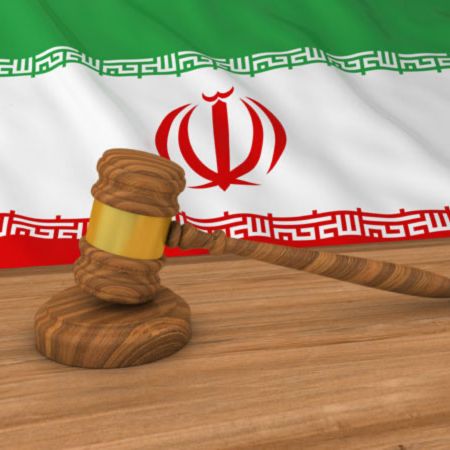In the complex field of legal translation, accuracy and efficiency are of paramount importance. As globalization continues to weave networks across borders, the demand for accurate translation services is increasing, especially in languages such as Farsi. However, manual translation processes often encounter hurdles that lead to delays and potential errors. In this article, we explore the transformative power of technology in streamlining Farsi legal translation and learn how innovative tools and software are redefining workflows, optimizing accuracy, and accelerating the delivery of high-quality translations.
Table of Contents
- The role of technology in streamlining the Persian legal translation process
- Use machine translation for your first draft
- CAT tool integration for consistency and productivity
- Automate quality assurance checks
- Foster collaboration through a cloud-based platform
- Overcoming language nuances with neural machine translation
- Introduction of the Terminology Management System
- Use speech recognition for transcription
- Improve cultural adaptation with localization tools
- Providing document analysis using AI
- Ensuring data security and confidentiality
- Overcoming challenges and limitations
- FAQ
- How does technology impact the accuracy of Persian legal translations?
- What are the main benefits of integrating CAT tools into your translation process?
- Is data security an issue in a technology-driven translation process?
- How do localization tools contribute to the effectiveness of Persian legal translations?
- What role does AI play in document analysis for legal translation?
- What are the key considerations when implementing technology into a Persian legal translation workflow?
- Conclusion
The role of technology in streamlining the Persian legal translation process
Use machine translation for your first draft
Machine translation has emerged as the basis for accelerating Persian legal translation, combining efficiency and innovation. Machine translation engines use advanced algorithms and extensive language databases to quickly create an initial draft that becomes the basis for refinement and refinement by human translators. This blend of artificial intelligence and human expertise accelerates the translation process without compromising accuracy, significantly reducing turnaround time.
CAT tool integration for consistency and productivity
Consistency is the cornerstone of legal translation. This ensures consistency across all documents and minimizes ambiguity. Computer-assisted translation (CAT) tools are reliable allies, providing translators with powerful features such as translation memory and glossary management. By storing previously translated segments and terms, CAT tools promote consistency throughout the translation process, increasing productivity and reducing the risk of errors.
Automate quality assurance checks
Accuracy is non-negotiable in a legal context, as even a single mistranslation can have significant repercussions. This technology takes on the task of automated quality assurance checks, carefully checking translated texts for linguistic accuracy, adherence to stylistic rules, and consistency. Advanced grammar and spell-checking algorithms combined with contextual proofing capabilities ensure that your final best translation company in Dubai meets our exacting standards, ensuring authenticity.

Foster collaboration through a cloud-based platform
Gone are the days of complicated file exchanges and disjointed workflows. Cloud-based collaboration platforms usher in a new era of seamless coordination between translators, editors, and clients. With real-time editing capabilities and a central document repository, these platforms foster transparent communication, accelerate feedback loops, and encourage collaborative revision. result? Increase efficiency, optimize workflow, and increase customer satisfaction.
Overcoming language nuances with neural machine translation
The nuances of legal terminology pose a complex challenge for translators, especially when it comes to understanding the intricacies of Persian legal terminology. Neural machine translation (NMT) algorithms address this challenge by deciphering complex language structures and capturing subtle meanings with incredible accuracy. By harnessing the power of deep learning, the NMT model continuously improves the understanding of Persian legal documents, ensuring more accurate and contextual translations.
Introduction of the Terminology Management System
Consistency of terminology is of paramount importance in legal translations, as accuracy depends on accurate interpretation of technical terminology. Terminology management systems (TMS) have proven to be essential tools for enabling translators to manage comprehensive Guide glossaries tailored to specific areas of law. TMS platforms maintain language consistency across different documents through systematic terminology extraction, validation, and integration, strengthening the foundation for accurate translations.
Use speech recognition for transcription
In an era characterized by rapid digitization, transcription is becoming an important part of the legal workflow, making it possible to convert spoken content into written text. Speech recognition technology based on robust neural networks streamlines the transcription process, converting spoken Persian legal arguments into text format with unprecedented speed and accuracy. This innovation not only speeds up documentation but also improves accessibility for different language communities.
Improve cultural adaptation with localization tools
For translated content to resonate with audiences on a cultural level, not only linguistic accuracy but also cultural adaptation is essential. Localization tools expertly navigate this territory, adjusting translations to reflect the unique cultural norms, idioms, and legal conventions of Persian-speaking countries. Localization tools increase the effectiveness and impact of legal translation near me by bridging language differences and cultural nuances, facilitating deeper engagement with your audience.
Providing document analysis using AI
The volume and complexity of legal documents require robust solutions for analyzing and understanding them. Artificial intelligence (AI) algorithms trained on a vast corpus of legal documents excel at analyzing, summarizing, and extracting relevant information from a wide variety of documents. AI-powered document analysis accelerates the pre-translation phase by automating labor-intensive tasks such as entity recognition, sentiment analysis, and key phrase extraction, providing translators with richer insights and context.
Ensuring data security and confidentiality
In the field of legal translation, the protection of sensitive information is of paramount importance and requires strict measures to maintain data security and confidentiality. Encryption protocols, multi-factor authentication mechanisms, and secure transmission channels form a bulwark against unauthorized access and data breaches. By prioritizing data protection and adhering to a strict regulatory framework, this technology increases confidence in the confidentiality of the legal translation service process.
Overcoming challenges and limitations
Despite its transformative potential, Farsi legal translation technology faces certain challenges and limitations. Linguistic nuances, especially legal terminology, pose obstacles for machine translation algorithms and require human intervention for nuanced interpretation. Furthermore, ensuring the ethical use of AI and compliance with data protection standards remains a concern and requires vigilance and proactive action by stakeholders.
FAQ
How does technology impact the accuracy of Persian legal translations?
Technology enables Persian legal translations by leveraging machine learning algorithms and neural networks to analyze linguistic patterns and contextual clues. improves accuracy and allows for more accurate interpretation.
What are the main benefits of integrating CAT tools into your translation process?
CAT tools streamline translation workflows, ensure consistency, and increase productivity by providing features such as translation memory and glossary management. and reduce turnaround time.
Is data security an issue in a technology-driven translation process?
Yes, data security is a critical concern in a technology-driven translation process. Robust encryption protocols, multi-factor authentication mechanisms, and secure transmission channels are essential safeguards to protect sensitive legal translation agency information.
How do localization tools contribute to the effectiveness of Persian legal translations?
Localization tools adapt translations to cultural norms, idiomatic expressions, and legal conventions specific to Persian-speaking countries, and Increase the effectiveness and impact of your communications.
What role does AI play in document analysis for legal translation?
AI-powered document analysis automates tasks such as entity recognition, sentiment analysis, and key phrase extraction, shortening the pre-translation stage and providing translators with richer insights and context.
What are the key considerations when implementing technology into a Persian legal translation workflow?
When implementing technology into a Persian legal translation workflow, consider language nuances, ethical AI usage, and privacy policy regulations. , and the need for human supervision to ensure accurate and culturally appropriate translations.
Conclusion
Technology can be a great ally in your quest for efficient, accurate, and culturally sensitive Farsi legal translations. From machine translation and CAT tools to AI-powered document analysis and localization platforms, innovative technologies are redefining translation workflows and achieving new levels of productivity and accuracy. Embracing technological advances while being mindful of challenges and ethical considerations will enable stakeholders to respond to the evolving legal translation landscape with confidence and agility.




